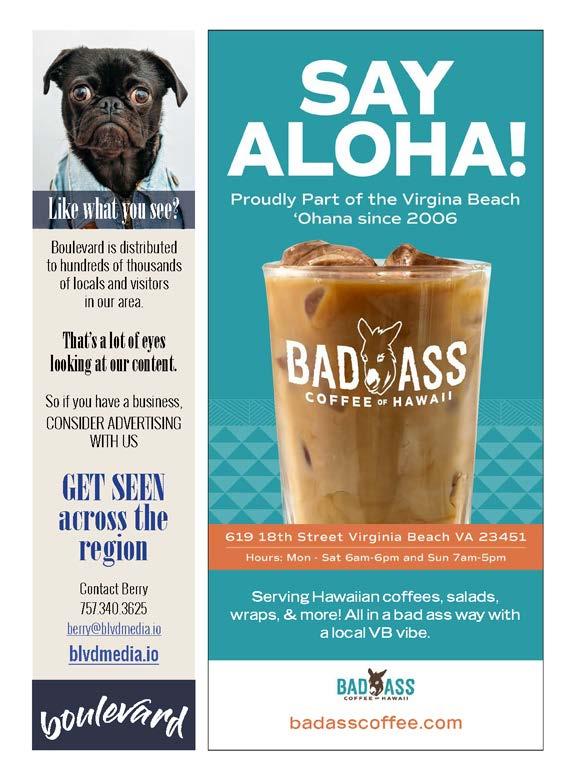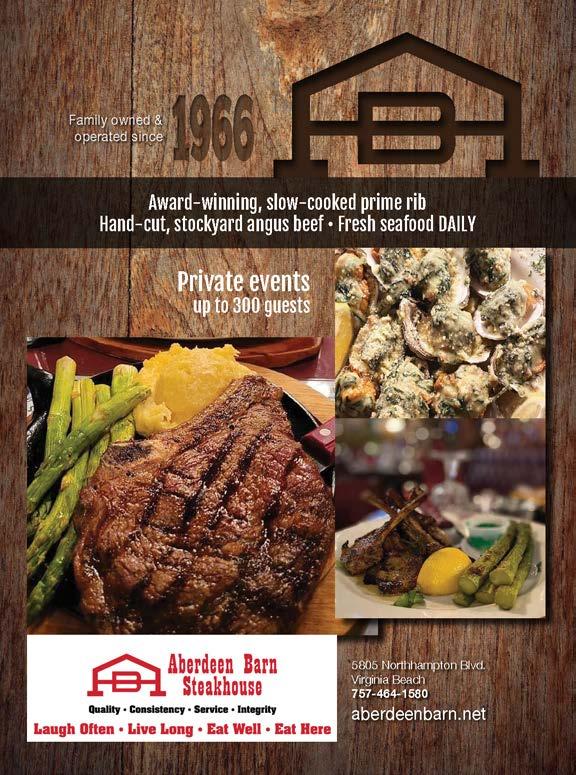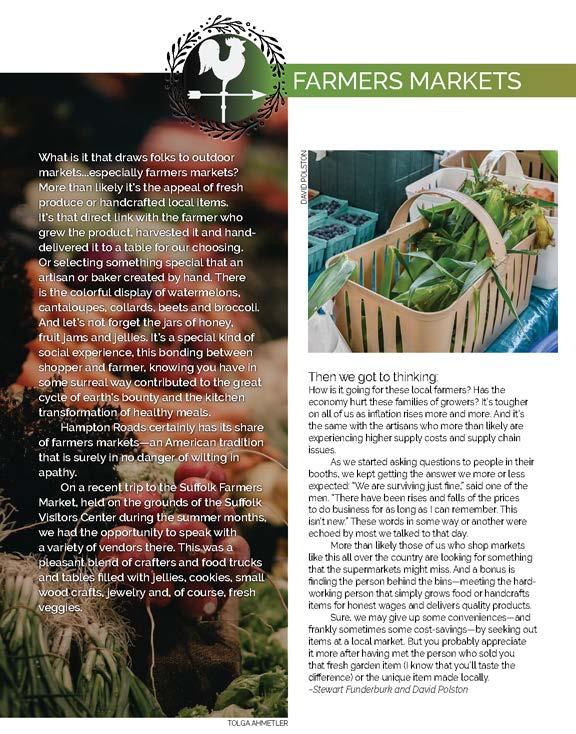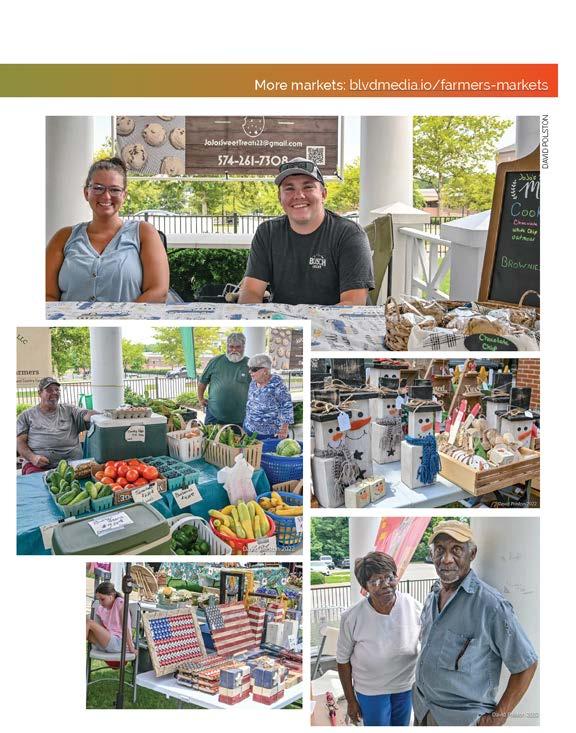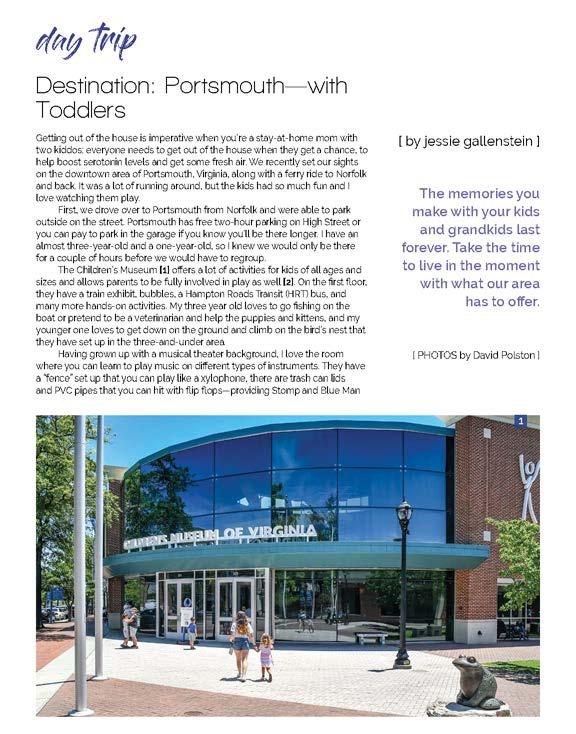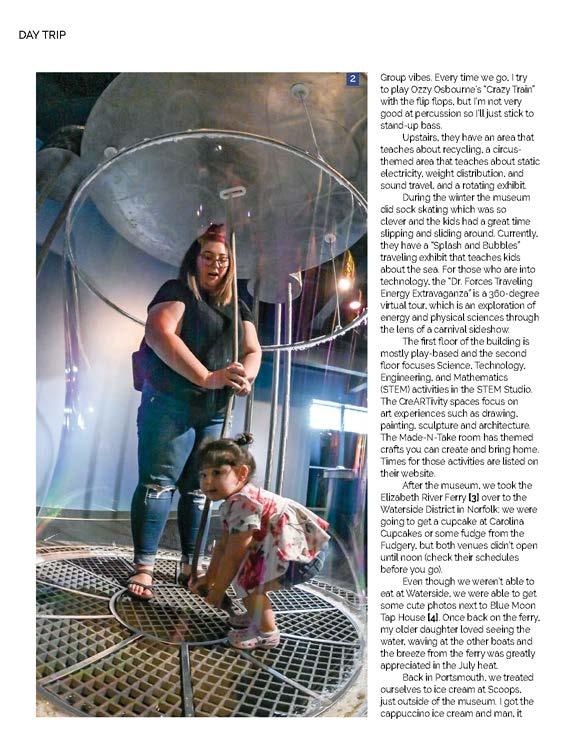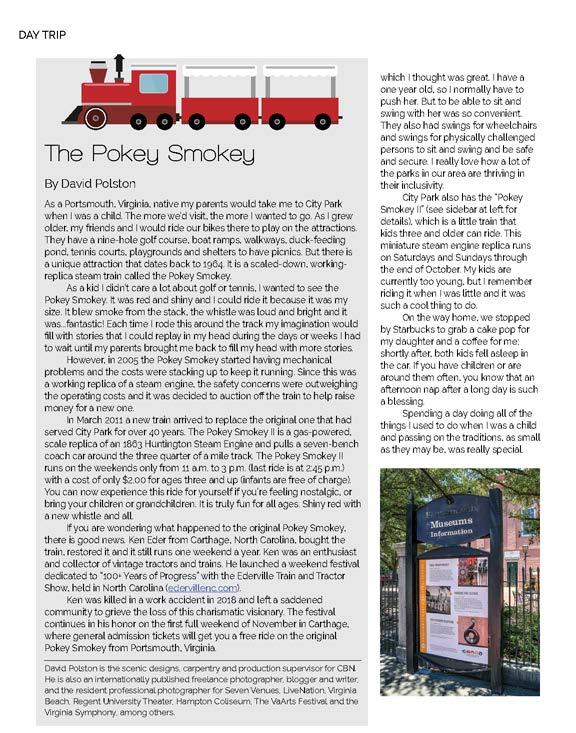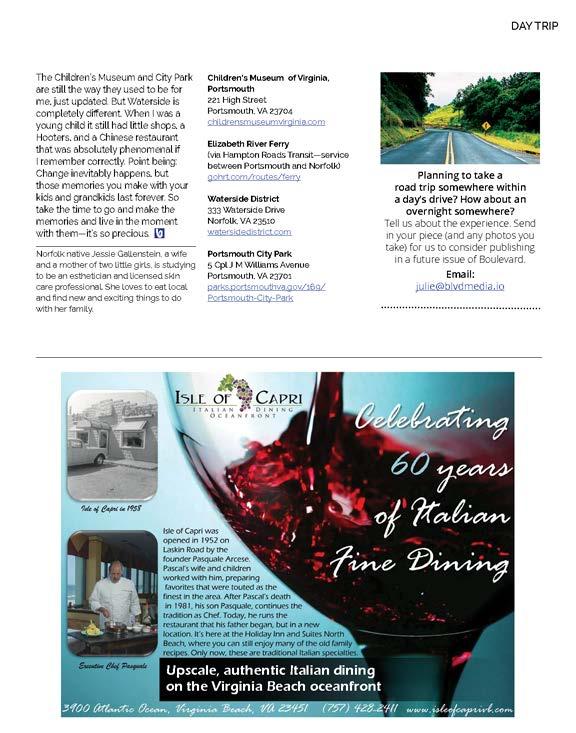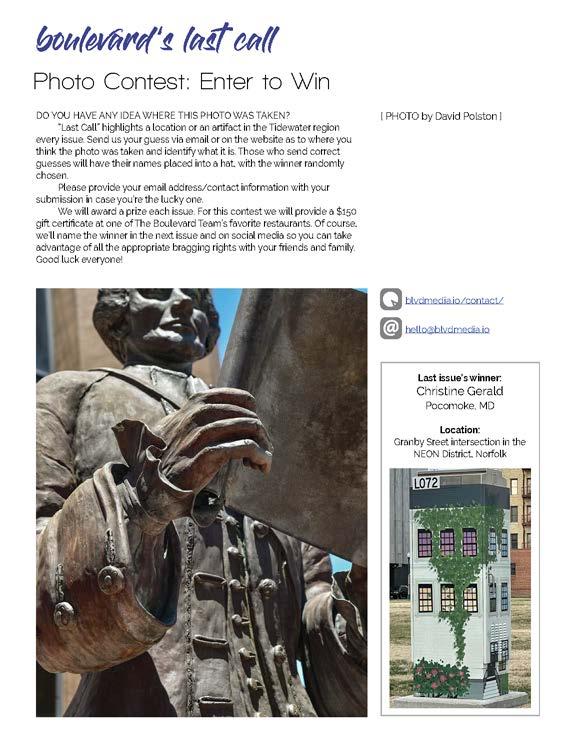
















As the final days of summer drift gently into view, we find ourselves standing at the crossroads of two seasons, caught between the sultry embrace of August and the crisp promise of September. In Tidewater Virginia, where the land meets the sea in a harmonious dance, these last moments of summer offer a poignant reflection on the beauty and fleeting nature of this beloved season.
Summer in Tidewater is a symphony of sensory delights. The sun, relentless and golden, casts its long, lazy rays across the sprawling estuaries and shimmering waters of the Chesapeake Bay. Each sunset is a masterpiece, painting the sky in hues of amber and rose, a daily reminder of nature’s artistry. The air is rich with the mingling scents of saltwater and sun-warmed sand, a fragrant testament to the endless days spent at the beach. In these final days, this heady bouquet reaches its zenith, inviting us to drink deeply of summer’s essence before it slips away.
The rhythm of life in Tidewater has a unique cadence during these waning days. Mornings begin with a warm, golden promise, and the days unfold with a languid grace. The sun-drenched afternoons are filled with the laughter of children, the gentle thud of volleyballs, and the soft murmur of waves kissing the shore. The evenings, too, are a celebration of summer’s splendor, as fireflies dance in the twilight and the stars emerge one by one, adding their own sparkling notes to the chorus of cicadas.
Yet, as the calendar edges closer to fall, there is an unmistakable shift in the air. The sun’s intensity begins to wane, replaced by a more mellow warmth that hints at the cooler days to come. The once-vibrant colors of summer slowly begin to yield to the subtlety of early autumn, as leaves start their slow transition from verdant greens to shades of gold and crimson. This transformation is not abrupt but rather a gentle, graceful dance, much like the way summer itself fades, offering one last, lingering embrace before its departure.
In these final days of summer, there is a sense of both nostalgia and celebration. Nostalgia for the carefree moments and the unhurried pace that define summer’s essence. We remember the lazy afternoons spent drifting on boats, the evening barbecues with friends and family, and the simple joy of a beach day without the constraints of time. It is a season of abundance, where the world feels both expansive and intimate, a vast canvas painted with the vivid hues of joy and relaxation.
Yet, this nostalgia is tempered by a celebration of the season’s legacy. The final days of summer are not merely a time of farewell but a moment to honor and appreciate the season’s gifts.

BERRY BRUNK President | Publisher berry@blvdmedia.io
CONTRIBUTORS
RICK BLANTON Photographer rick@blvdmedia.io
JOHN CADELL Photographer
MOLLY DONALDSON Contributing Writer
WILLIAM SUGG
RACHITA NAYAR Copy Editor
KHRIZEL MANALANG Layout Designer
YURI SERNANDE Chief Operations Officer
SUSIE BRUNK General Manager susie@blvdmedia.io
ADVERTISING
Berry Brunk 757.340.3625 berry@blvdmedia.io
Visit our website blvdmedia.io
2024 | Vol 5, No. 3 Boulevard is published quarterly (February, May, August, November) by Blvd. Media, LLC 4001-117 Virginia Beach Blvd., Suite 181 Virginia Beach, VA 23452 All rights reserved.

blvdmedia757 boulevardmag

The bountiful harvest of local produce—juicy tomatoes, sweet corn, and plump peaches—reaches its zenith, offering a feast of flavors that are as much a part of summer as the sun and sea. Farmers’ markets brim with the vibrant colors of late summer’s bounty, and every bite of these seasonal treasures is a reminder of the earth’s generosity and summer’s rich offerings.
As we stand on the threshold of autumn, there is a sense of anticipation that accompanies summer’s departure. Fall brings with it a new rhythm and a different kind of beauty—one that is crisp and invigorating, with its own set of sensory delights. The cool, refreshing air, the crackle of fallen leaves beneath our feet, and the rich tapestry of autumnal colors all promise a fresh chapter in the seasonal cycle. However, before we fully embrace this change, let us take a moment to savor the last days of summer with gratitude and mindfulness. Let us relish the warmth of the sun, the sound of the waves, and the taste of summer’s final harvest. Let us make memories that will sustain us through the cooler months, holding onto the essence of summer as it gently slips into the embrace of fall.
In Tidewater, summer’s final days are a time of transition, but also of celebration. It is a time to appreciate the beauty of the present moment and to honor the season’s legacy as we prepare to welcome the changes that lie ahead. As we bid farewell to summer, let us do so with a heart full of gratitude for the joy it has brought and the anticipation of the new experiences that autumn will bring.
In these last moments of summer’s grace, let us find solace and inspiration. Let us revel in the warmth, the light, and the abundant beauty that has defined our summer days. And as we turn our gaze towards the coming season, let us carry with us the spirit of summer—a spirit of joy, relaxation, and a deep appreciation for the fleeting, precious moments of life.
So here’s to the final days of summer in Tidewater Virginia—a time to cherish, to celebrate, and to savor. As we watch the sun set on this season, let us embrace the beauty of its departure and look forward with hope and anticipation to the changing seasons ahead.

BERRY BRUNK President/ Publisher

SUSIE BRUNK
by Willian Sugg

Deep drop action continues to provide great entertainment and excellent table fare for those venturing offshore. Many sportfishing boats have added deep dropping on wrecks and noted productive areas when trolling for their targeted species has slowed. This increases the likelihood of coming home with meat in the box. Blueline and golden tile, black bellied rosefish, grouper, black sea bass, trigger fish and flounder have been the primary focus but bluefish, amberjack, crevalle jack, king mackerel, spade fish, sharks, eels and tautog are available as well. Cutbait, squid, blue crab, fiddlers or clams on multi hook rigs with large sinkers or jigging spoons tipped with Gulp baits will fill your coolers if you are on good locations. Check online for NOAA chart lists of known wrecks and structure numbers to try. Flounder action on the offshore wrecks has been phenomenal as many boaters report catching their limit of quality flatties by jigging bucktails tipped with large Gulp tails or strips of cutbait. Look for this to continue into the winter.
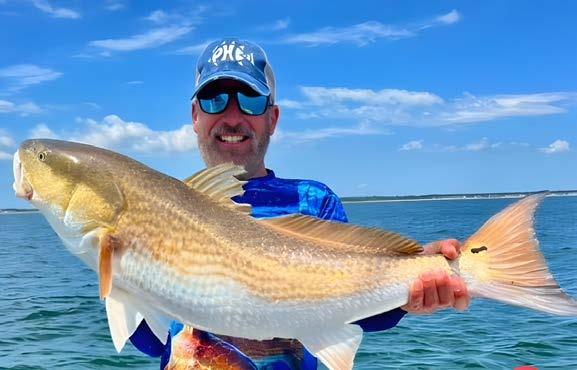
Dropping live spot, croaker, finger mullet or menhaden on plain hook rigs is another excellent way to target offshore wreck species. However, you may encounter larger predators this way. Make sure your tackle and drag is set to handle the fight. A few years ago while catching sea bass on squid strips, I noticed several nice mahi schooling below the boat. I threw some squid in the water to keep them from leaving. We all cranked up to them and started hooking up. Unfortunately my drag was still tight from hauling fish out of the wreck so as soon as my mahi started running, it broke off. Lesson learned. Swordfishermen have been catching as well but it’s been slow. Look for action to improve. The spadefish bite has been awesome with most offshore wrecks, towers and other structures loaded with quality fish.
During August, September and October you’ll typically reel in these catches:
Offshore
Swordfish, tilefish, big eye tuna, yellowfin tuna, bluefin tuna, mako shark, sea bass, mahi/dolphin, Spanish mackerel, ribbonfish, bluefish, white marlin, blue marlin, wahoo, cobia
Chesapeake Bay
Red drum, black drum, flounder, croaker, spot, striper, Spanish mackerel, spadefish, ribbonfish, cobia, sheepshead, speckled trout
Tidal Rivers
Spot, croaker, puppy drum, trout, flounder, striper
Offshore
Swordfish, tilefish, big eye tuna, yellowfin tuna, bluefin tuna, mako shark, sea bass, mahi/dolphin, black sea bass, trigger fish, spadefish, amberjacks, flounder, Spanish mackerel, king mackerel, white marlin, blue marlin
Chesapeake Bay
Red drum, black drum, flounder, croaker, spot, striper, Spanish mackerel, spadefish, cobia
Tidal Rivers
Spot, croaker, puppy drum, trout, flounder, striper, speckled trout
Offshore
White marlin, bigeye tuna, mahi/dolphin, yellowfin tuna, wahoo, tuna, sea bass, flounder, trigger fish, black drum, red drum, bluefish, blue marlin, tilefish (blue & gold), king mackerel, swordfish
Chesapeake Bay
Bluefish, red drum, flounder, Spanish mackerel, spadefish, cobia, sheepshead, ribbon fish, striper, tautog, speckled trout, puppy drum, striper
Tidal Rivers
Bluefish, flounder, speckled trout, spot, croaker, puppy drum, ribbonfish, striper
Use clam strips on #2 red hooks under corks and dangle a chum bag in the water to bring the fish up. Remember to be courteous to your fellow boaters. Offshore trolling has been producing great catches with many anglers reporting tuna, dolphin (mahi), wahoo, both white and blue Marlin and mackerel in good numbers with an occasional mako shark or sailfish in the mix. Most are being caught on ballyhoo rigged natural or with sea witches. Big skirted plastics rigged on heavy mono or wire and spreader rigs are producing strikes as well. Directional spreader rigs, which give the appearance of a baitfish school, can be adjusted to run straight, port or starboard to maximize your presentation and get more baits into the clear water away from the boat. As the smoldering hot, “dog days”of summer yield to cooler trends in September, look for action to pick up as more game fish begin to migrate southward along the Atlantic coast for the fall run. Look for birds and bait balls to help locate schools of feeding targeted species. This holds true for inshore species as well. Inshore trolling has been outstanding so far this year with large numbers of Spanish mackerel, bluefish, bonita or false albacore and ribbon fish being caught all along the coast and into the Chesapeake Bay with an occasional king mackerel being found.
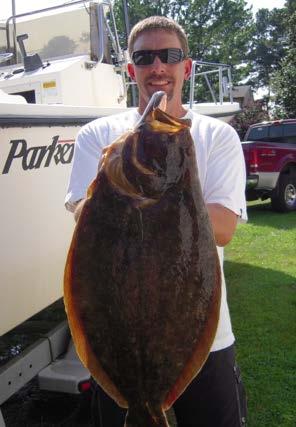
Most species have been caught on spoons or gotcha plugs. Look for action to continue until about September when the water temps begin to cool. At that point the Spanish will head south as the blues and ribbonfish numbers and size increase. The boats with towers have been on fire! Once pods or schools were spotted, many red drum and cobia were caught by those casting bucktails or other artificials, or throwing live bait such as eels, spot or finger mullet. The number of large red drum this year has been nothing short of amazing with many boat captains reporting several trophy citation releases daily with many overslot fish being caught as well. Capt. Bill Pappas Jr. of Playin Hookey Charters reported breaking his boat’s personal record for most bull reds in a day with a total of 32 and the largest was 51”. He also logged two other days with 26 fish each! That’s some great fishing that will continue until fall. Anchoring with cut bait or live bait is still an excellent way to catch both red and black drum, cobia, tarpon, sharks, sting rays and skates. Speaking of tarpon, several have already been caught this year by fly fishermen on the eastern shore. They will continue to dwell in Virginia waters until near October before heading south to winter. Slot sized reds or puppy drum have shown in force this summer with many anglers getting their limits quick. Live minnows or cut bait on plain 1/0 hooks and split shots under a cork or on the bottom, or casting assorted top water or sub surface lures have produced outstanding numbers in the Tidewater area and should continue into fall. Spadefish have moved into the bay and can be found on the CBBT and channel marker buoys in clean water. Small stripers and larger blues have been found around the CBBT, HRBT, MMBT and the JRB. Remember the striped bass season is currently closed and will reopen the first week of October. Speckled trout have been sporadic this summer but large fish with good numbers of keepers have been found near the local bridge tunnels, grass flats and in many of the Bayside creeks and tributaries. Live or cut bait has been the
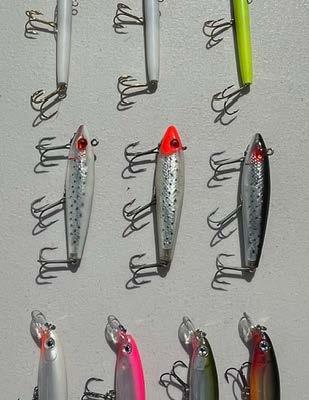
ticket with some fish falling to top water and subsurface artificials. Look for trout action to just get better as the water temperature begins to drop when fall approaches. Spot are showing strong this summer with most pier anglers and boaters reporting huge catches on bloodworm, squid, shrimp, sand fleas, clam and fish bites. Croaker have remained mostly small this year. Look for both to get bigger through September as they make their fall run. Using high/low bottom rigs near rocks, channel edges, mussel and oyster beds with small pieces of bait should result in good numbers of most bottom fish including, Roundhead, grey trout, porgy or pigfish, spot, croaker, sea bass and Atlantic pufferfish. Anglers fishing near the beaches using this rig have also enjoyed catches of pompano, sheepshead and small black drum. Black drum and sheepshead of all sizes have been caught all summer along crustacean encrusted pilings and docks or along oyster beds throughout the Bay and its tributaries. Chunks of crab, fiddlers, clams, sand fleas or shrimp on football style jig heads or plain hooks suspended along structure has been deadly for the sheepshead, and laying them on the bottom has produced good numbers of slot
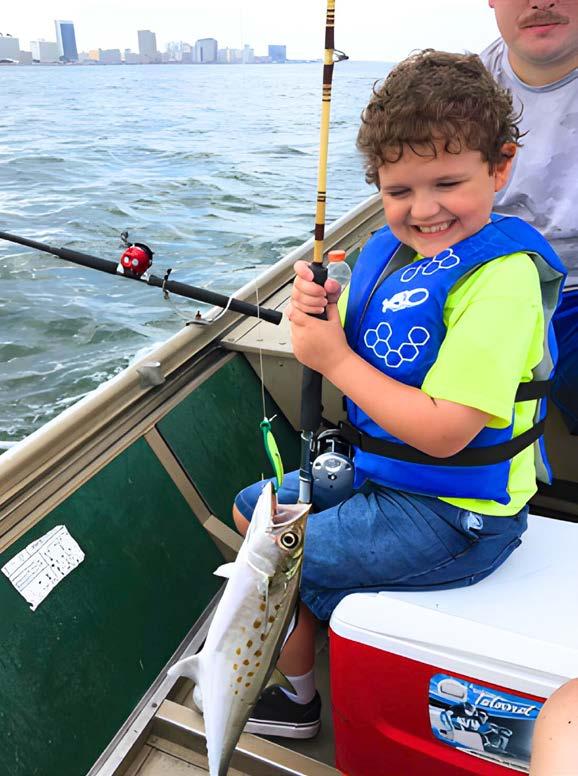
and large black drum. Flounder inshore has been slow with many anglers reporting lots of small fish with little or no keepers. However, several citation sized flatfish have been caught using live bait or jigging bucktails directly in the rocks and structure of inshore wrecks and the CBBT islands recent ly. Look for this fishery to improve through August as more fish leave the shallows to feed up before heading back offshore to winter and spawn. Freshwater bass action has been mostly early and late with top water action best in low light conditions and the worm bite being more pro ductive overall. August is traditionally for lunker largemouths. Big feeding up as they know fall Crappie, white and yellow shellcrackers, bluegill and members of the bream and family will be found moving between cooler deepwaters during the heat of the day and the shallows early and later. Oftentimes a paddle or twister tail jig fished at different depths on long casts will find the bulk of the school. Preda tor game fish like pike, walleye, saugeye, and catfish will generally suspend near structure and close to the forage food. Striped bass, musky and gar will be found in creek channels near shallow flats and creek mouths where they can pen baitfish to steep banks and sand bars. Trolling live bait or artificials can find feeding fish. In low light areas and run ning water the fish can chase bait very shallow and be taken on swimbaits and topwater lures. As Carp will frequently suspend in shady coves of lakes or on the bottom in oxygen rich moving waters of streams and rivers, fishing worms or corn under a cork when suspended just below the surface and on the bottom when in moving wa ters can be very productive. Many anglers find light line and ultralight gear or fly rods to be more challenging and more rewarding than using heavier gear. Our state is full of parks and streams which hold quality Brown, Brook and Rainbow Trout along with several other species of fish like smallmouth bass that are willing to take an offering of a well placed worm, lure or fly. Featured fish: Atlantic Spanish Mackerel which visit Virginia waters each year are members of a particular tribe of mackerel. While Spanish Mackerel can be found worldwide in tropical and subtropical waters where temperatures permit, ours travel from Florida each spring.
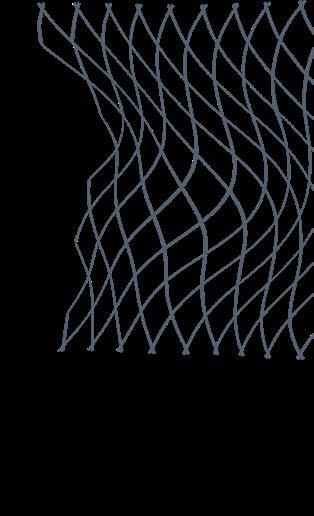

Some hang around along the Virginia and coasts of the Carolinas while others travel as far as Nova Scotia. They spawn several times throughout the summer and travel back to Florida in September to winter. The eggs are cast near the surface in open water and float along until they hatch. The larvae grow rapidly feeding on zooplankton until large enough to eat small crustaceans, shrimp and small fish. They can live up to 11 years but the average lifespan is 5-8 years. They are schooling fish which prefer high salinity warm waters between 68-77 degrees and are often found within a mile or two from the beach in tidal rips and current or near inshore wrecks and seamounts. They are often seen jumping as they like to force menhaden and small fish up against the surface where they can be gorged upon. Many anglers prefer to cast Gotcha lures, Mirrolures, X Raps, jigs and spoons when they find them feeding. Spanish are especially fun on light spinning rigs and can frequently be caught by anglers casting from jetties, piers and beaches as well as boats. Trolling is definitely the most common method boaters use to find and catch them. By trolling small Clark or Huntington Drone spoons of various colors on 15-30ft of 30lb. clear leaders with either 1-6 oz, sinkers or #1 planners and snap swivels on both ends, you can keep a good spread behind and below the boat and cover lots of water. Boat speed varies with current and wind, but 5-7 mph should put you in the ballpark. Look for notable tide lines and fish both sides until you locate fish. Usually they will be in the cleaner water but
Look for notable tide lines and fish both sides until you locate fish. Usually they will be in the cleaner water but go where the bait is. Visible current rips should be heavily investigated and be sure to try several different angles before giving up on a spot that has fish. Spanish are fast, violent fighters and can be very erratic when being leadered to the boat. They have very sharp teeth so make sure they are brought aboard in a safe direction. Spanish can be soaked in a salt brine to make them more durable as bait. They make excellent strip baits for flounder and king mackerel, or rigged whole and trolled for marlin. The meat is absolutely delicious and you don’t even have to skin or scale them before eating. Try this recipe: Spray the fish off with the water hose. This will remove many of the micro scales, then filet. You may want to remove the blood line if it bothers you. Otherwise, much of the healthy Omega 3 is found in that dark strip so I usually leave it in. Place filets skin side down on an aluminum foil wrapped broiler rack with several small drain holes poked in the foil. Sprinkle melted butter, lemon juice, onion powder, paprika, salt and pepper over the filets. Place in the oven and bake at 350 degrees for approximately 15-18 minutes or until the meat is white and flaky. Be sure not to burn as the filets will be thin depending on the size of the fish. Tight lines friends and let me know how you do on your next fishing trip!

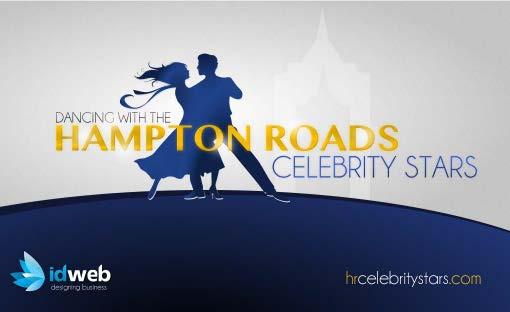
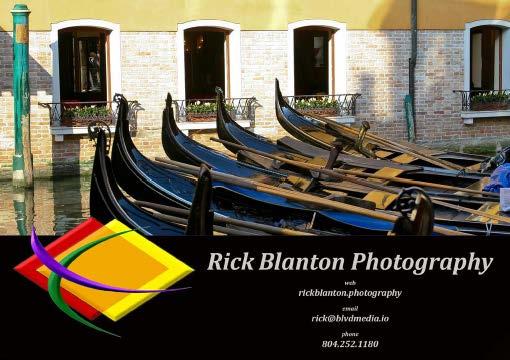
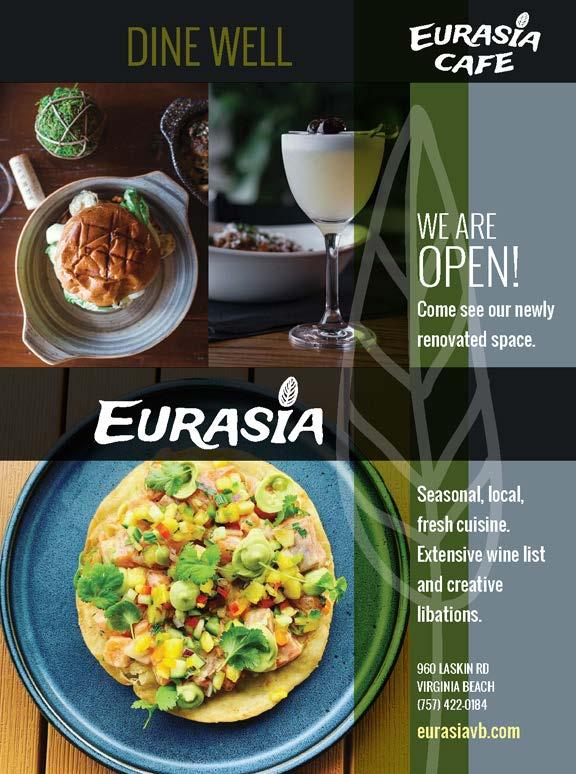
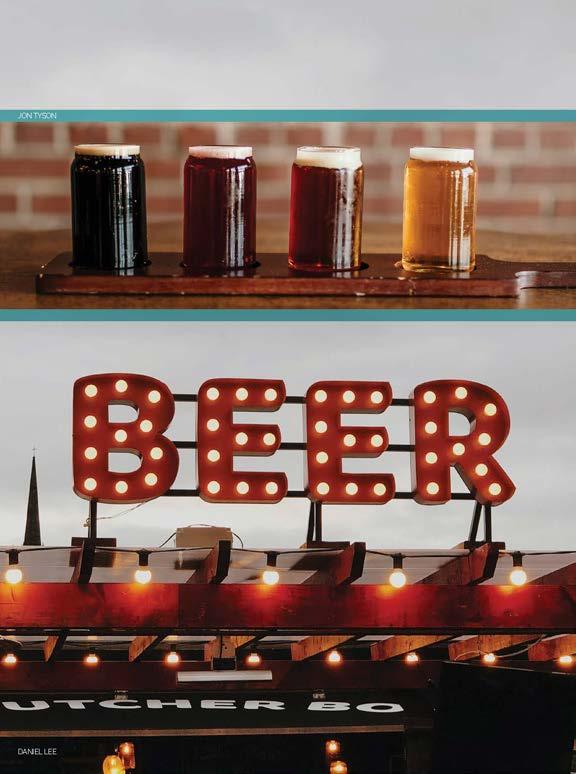
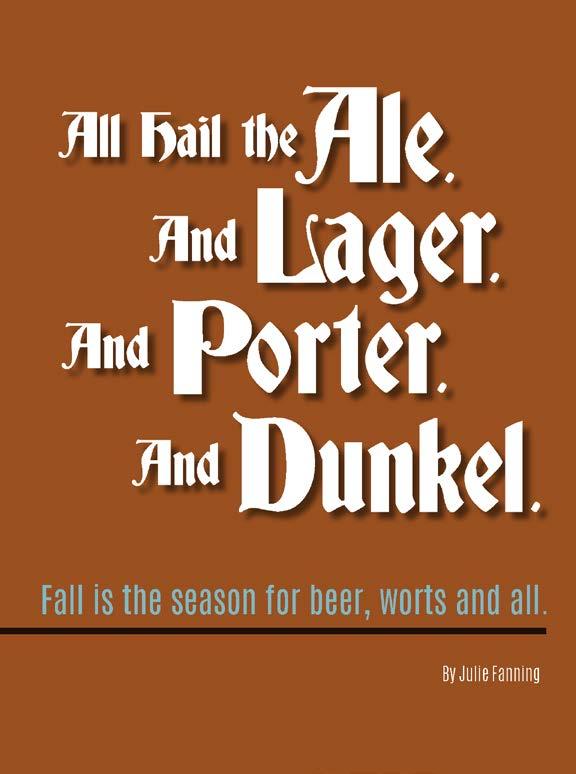
Beer. It’s pretty amazing there can be such a huge variety of tastes and smells produced with essentially water, grains and yeast. And I’m talking so completely different and richer than my dad’s staple when I was growing up: PBR.
Yes, I am a beer snob. I know what I like and I know what I should…. pass on to someone else. But the creativity of artisan brewers is remarkable and the sheer number of high-caliber breweries in Tidewater is respectable.
Fall tends to be the time of year that folks start to pivot from the refreshing summer Hefeweizens, pils and witbiers consumed to quench their thirst at the beach or backyard barbecue. We are rolling into the time of year for rich brown ales and stouts and those pack-a-punch IPAs. And of course we can’t forget the horde of pumpkin ale options.
The season brings with it football tailgating and, of course, Oktoberfest (more on that later)—which are all celebrated with pints of beer. So why not have a pint of something special.
The Virginia craft beer scene has been exploding. Since the passing of Senate Bill 604 (SB 604) in 2012—which allowed breweries to sell beer by the glass directly to customers at their production facilities and established the taprooms that we know today—the number of breweries has grown 500%. In fact, according to the Governor’s office, “Virginia’s craft beer industry ranks #1 in the South for breweries per capita and ranks #17 in the United States.” The Commonwealth has more than 250 breweries as of today. In early August of this year, Governor Glenn Youngkin formally recognized August as Virginia Craft Beer Month. Before the passage of SB 604, there were only four craft breweries in Hampton Roads. By the summer of 2022.
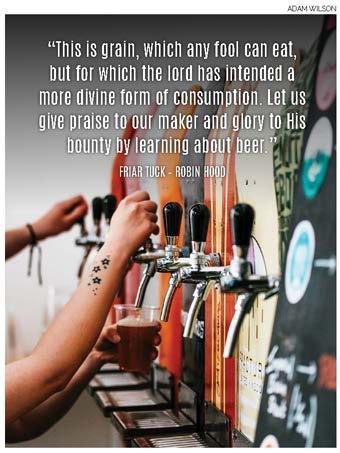
the number of craft breweries has jumped to approximately 33. But the density of the region’s population— coupled with the number of tourists and military coming in—means each brewery should be able to find their ideal demographic and experiment with other things to bring in customers: seltzers and ciders, contests, games and live music. It hasn’t all been happy bubbles and brews, though. Many people I spoke with as well as news outlets have cited an oversaturation of the beer market as the sheer
number of taprooms that opened may have caused a few to suffer. And the lockdowns of COVID were tough on everyone in hospitality. But quick-thinking brewery owners and entrepreneurs persevered with standout concoctions to woo new consumers, outdoor/tented tasting rooms—even during the colder months—and promoted growler and crowler fills for take-home consumption as the thing to do while we were still social distancing. Creative marketing is the key.. But the industry still grows here.

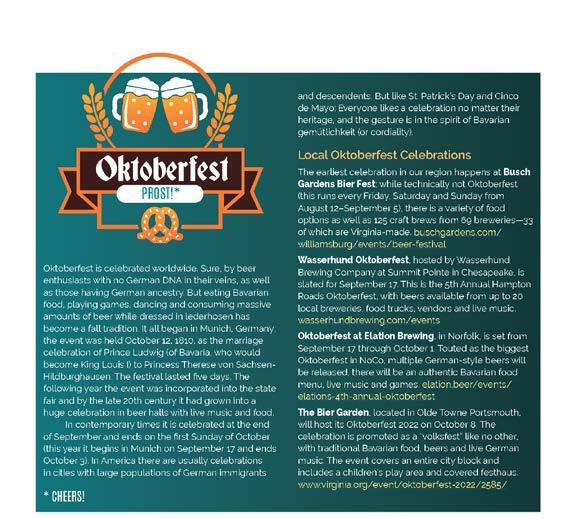
This year marks the 10th anniversary of the 757 Battle of the Beers, a full day beer festival with more than 40 regional brewers vying for attendees’ votes in three different categories. This is pretty exciting, considering the caliber of beer being produced across the region. How so?
On August 8, the Virginia Craft Brewers Guild (VCBG) announced the 2022 Virginia Craft Beer Cup Winners. According to the VCBG press release, head judge Charlie Harr stated, “Wow,
what a great competition! It was clearly evident in the tight race that every brewery is extremely dedicated to the craft and their dedication is inspiring. This year’s competition proves Virginia has some of the best craft brewers in the nation.”
The full list of winners is posted on the Virginia Craft Brewers Guild website (www.virginiacraftbrewers. org/ vcbg-cup-awards-press-release/), but there are so many local breweries who placed in the top three in many categories of this competition. A few include
Tradition Brewing Company, located in Newport News, who earned first place in the Brown Ale category with their “Honey Brown.” Three Notch’d Brewing Company, in Virginia Beach, won the Hazy IPA category with their “King of Clouds Juicy IPA.” Two Williamsburg breweries brought home first place awards: Alewerks Brewing Company’s “Chesapeake Pale Ale” won the Pale Ale category and Precarious Beer Project’s “Chug Rug” garnered the winning West Coast style IPA.
The 757 Battle of the Beers

festival is September 24 in Virginia Beach (www.757battleofthebeers. com). Get your tickets, have some fun, drink some [really good] beer and help raise funds for charity.
Julie Fanning, Boulevard’s chief creative officer, is a professional designer by trade, writer by occasion and a fan of handcrafted beers—especially the bold and hearty ones.
Boulevard photographer David Polston was out and about in the area recently and visited a few of the local breweries. Some highlights (nowhere near the comprehensive list of excellent options available) are described here in no particular order.
PHOTOS BY DAVID POLSTON
Back Bay Brewing Co.’s Farmhouse [1] is located in a renovated farmhouse in Virginia Beach originally built in 1912. Opened in 2018, they are dedicated to using the highest quality ingredients to produce the freshest beers and ciders. The original Back Bay Brewing Co. was founded in 2011 and also is located in Virginia Beach. farmhousebrewingva.com
Smartmouth Brewing Company [2] was founded in 2012 in Norfolk (one of the pioneers in the Hampton Roads craft beer scene) and by 2018 opened a second location in Virginia Beach. They pride themselves on unique styles, quality ingredients and overall well-crafted beers. smartmouthbrewing.com
Makers Craft Brewery [3] offers a spacious taproom located in the Historic Norfolk & Western Railroad District housed in an old burlap bag manufacturing plant. The brewery was open for business in 2018, is dog friendly and offers a rotating calendar of food trucks, event space rental, a cigar bar and brewery tours. makers.beer
O’Connor Brewing Co. [4] is serious about having fun, building a strong community, and handcrafting unique,
| Aug - Oct 2024
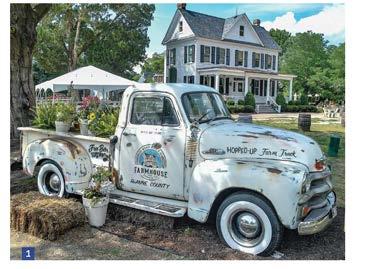
innovative beers. O’Connor Brewing Co. brewed its first batch on St. Patrick’s Day 2010, becoming one of Coastal Virginia’s very first craft breweries. They are award-winning, offering dozens of styles to a growing fanbase who appreciate their quality and consistency. oconnorbrewing.com
Bold Mariner Brewing Company [5] originally opened in the Lambert’s Point section of Norfolk in 2015. They quickly produced award-winning beers and gained in popularity with local residents, active duty military and veterans. And then a former Bank of the Commonwealth building just steps away from the Ocean View Beach became available; they bought it and moved once renovations were complete. It’s a large two-story beach house with wrap-around porches where you can take in the scenery and enjoy one of their brews. You can also order a smoked barbecue sandwich and side from the onsite “Bar-Q” eatery. theboldmariner.com
The Garage Brewery [6] is a 7-barrel, woman-owned microbrewery located in the heart of the Greenbriar area in Chesapeake. Sixteen taps rotate a variety of “well built beers.” The industrial theme of the taproom is inviting,
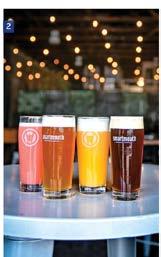
comfortable and spacious—and dog-friendly. It was designed and built with reclaimed and repurposed materials. The outdoor patio extends past the overhead door and the bar features blueprints of the building and brewing equipment. www.garage-brewery.com
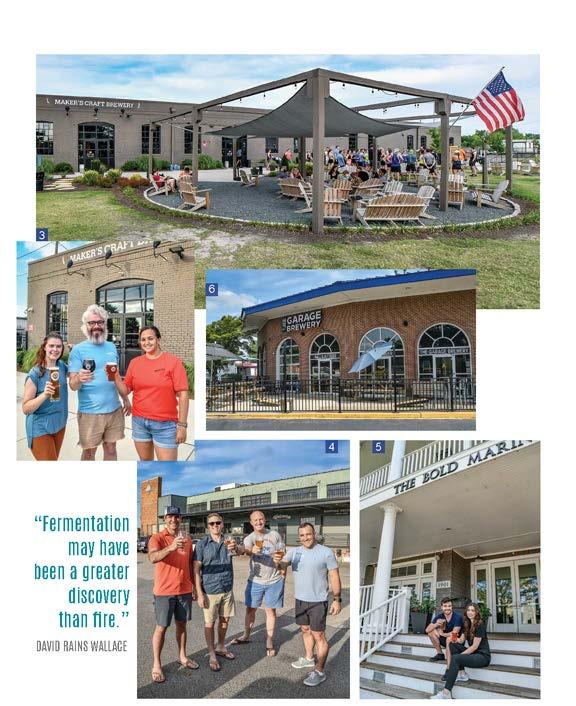
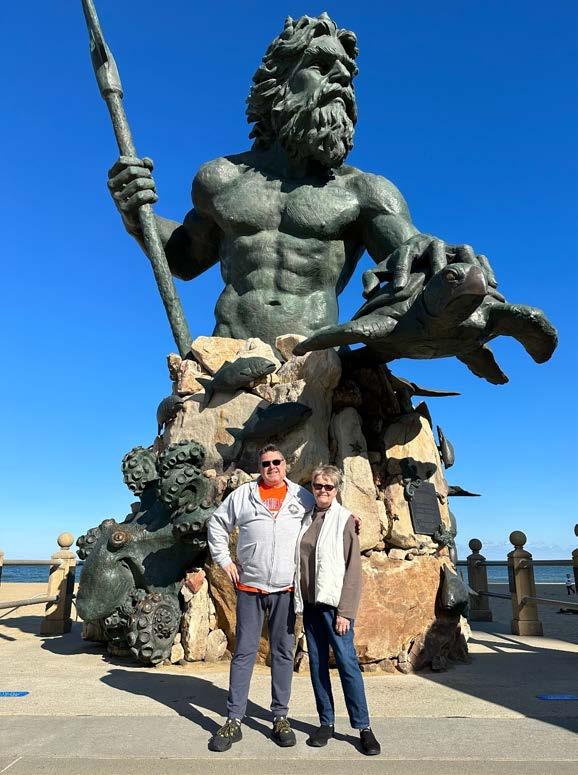
Many locations have become famous for their beaches, picture-worthy views, music, and traditions. Now is the perfect time for Virginia Beach to receive its overdue fame for its fine seafood, fresh produce, and talented chefs. Locals regularly enjoy eating outstanding delights from the oceans and look forward to ordering the latest seasonal “catch of the day”.
We love our tourists, who visit and impact the Virginia Beach economy. According to the latest impact study (2022), Virginia Beach, tourism provided:
Total Economic Impact: $3.7 billion
Total Number of Visitors: 13.64 million Visitor Spending: $2.4 billion
Jobs Created: 32,704
State & Local Tax Revenue: $324 million Tax Savings for VB families: $1,754 annually.
Those traveling from afar are amazed at the bounty of hundreds of restaurants serving fresh meal choices and anchoring those memories. If you think about it, sitting around a table laughing while you enjoy a great meal creates a solid feeling of joy. That emotion is how we later recall our times together. New traditions can start with memorable, delicious meals around tables while stories are shared.
Our coastal life manifests itself in the bubbling pots on the stove and the plates served to our tables. That life is widely embraced by our visitors, which is a huge part of why they return. They depart Virginia Beach thinking, “What a great place to live!”. At early ages,

coastal-living children learn the names of seashells, the types of fishes and waves, and the roles of ocean creatures. Our shoreline culture instills an appreciation for the natural ingredients we enjoy. Illuminating the concept that food connects us all by creating lasting memories of dining together is what the Virginia Beach Restaurant Association (VBRA) aspires to achieve. In our community, we are fortunate to have access to excellent seafood, locally sourced meats, vibrant produce, and friendly service. The challenge was
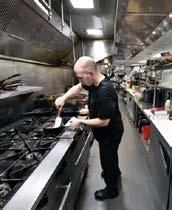
to keep both visitors and residents informed about the fantastic meals available at our local restaurants. This idea evolved into a visual showcase of these offerings. Over 700 photos were taken and culled down to what is now on display for you to visit. Moments are beautifully captured in a photographic journey by Nathan W. Beck, who took over this 18-month journey visiting local sites. It is a must-see exhibit in Virginia Beach, and there is even a scavenger hunt for kids to play as they view the images!
This photographic exhibit, titled “The Recipe,” visually narrates the essential story of how various elements come together to create a delicious meal. Through the 88 displayed images, the viewers can embrace the VBRA’s goal “to make Virginia Beach a culinary destination.”
Nathan W. Beck www.beckimage.com is an internationally renowned editorial photographer who expertly captured hundreds of unique images that will make you lean in to see all the details closer.
That effort to try dining at different locations can start locally with all of us. How so? Because everyone has their favorite restaurants so we can get stuck in an eating loop instead of taking advantage of the variety of restaurants to awaken our palates. Need a date night? Or do you want to ooh and awe at a new dish? Then, revisiting a restaurant can be great fun. Viewing the photographs in “The Recipe” serves as a reminder to explore our culinary spots. The images not only make you hungry and thirsty but also spark curiosity about where they were taken.
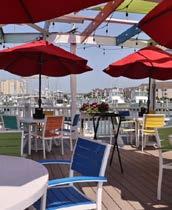
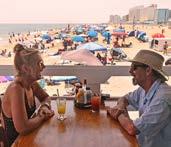
The exhibit invites you to imagine yourself in those beautiful locations, enjoying a steaming meal. The curiosity stirred in viewers by “The Recipe” encourages them to visit these places and experience them firsthand. In this way, the goal of raising awareness of our local culinary treasures is achieved! Virginia Beach has become a culinary destination.
The exhibit is a fun and colorful delight. It is all on one floor, so you can easily stroll by each image and feel amazed. Many photos will make you wonder, “How did Mr. Beck capture that split second moment?” For example, one image is a sunset on the beach with a martini filled with olives, and a cresting wave is about to crash.
Seeing some familiar locations with a fresh lens makes this exhibit even more powerful because it makes you stop and look again. Like our Virginia Beach guardian, the 26-foottall statue of King Neptune by the sculptor artist Paul DiPasquale. This one-of-a-kind photo was shot at a unique height and angle, which created such interest among the viewers that we had to promise to offer it for sale, so they’d have a copy.
Insert QR CODE HERE.
Many admirers were visiting from other countries and said when they looked at Neptune, they would never forget their time in Virginia Beach and the beautiful meals they enjoyed.
After 1000 viewers attended the previous exhibit location, “The Recipe” exhibition has moved to its next location at the Joint-Use Library on the ODU/TCC campus at 1700 College Crescent, VB 23453. It is open Monday through Saturday to the public until September 7, 2024. In this stunning library, you instantly feel how the images pull you over to study them. Notice how the walls are warmed up by pictures of delicious dishes, friendly smiling servers, farmers, oyster farms, produce fields, and the notable action behind the scenes.
Martha Davenport, Executive Director of the Virginia Beach Restaurant Association (VBRA), is dedicated to encouraging local diners and visitors to explore new places. To achieve this, she has expanded the number of participating restaurants in the annual Restaurant Week. In 2025, the VBRA will celebrate the 20th ann

iversary of Restaurant Week, taking place from January 20-26, 2025. Mark your calendars and spread the word to be prepared for this exciting event. Martha’s goal for the event is to provide even more options for diners to revisit their favorite spots and discover new ones.
Food is still a huge connecting source that brings us all together, and as the book “Collecting True Friends” recommends, we should take the time to invite someone to break bread together and laugh. It might be the beginning of a beautiful friendship!
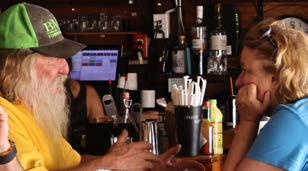
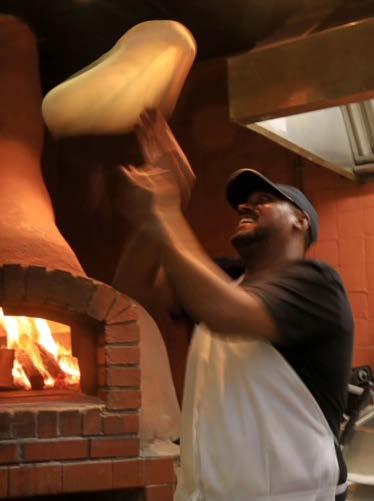
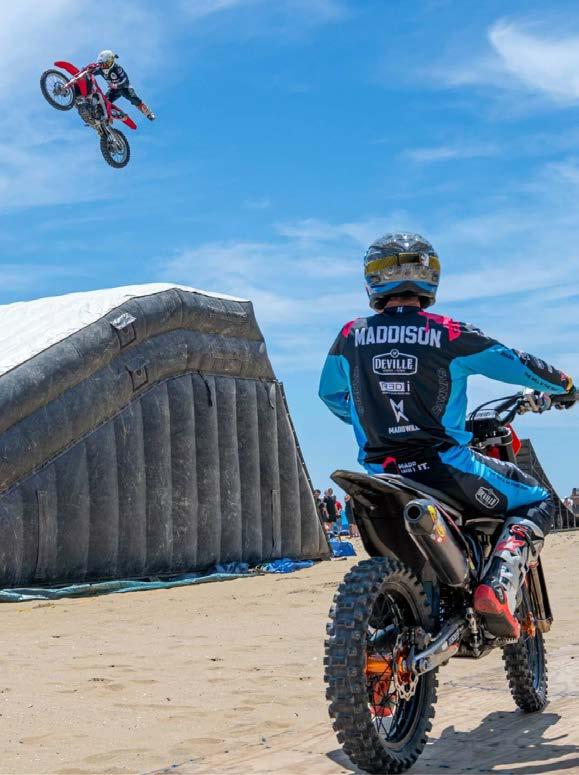
As the Paris Olympics captivate the world, action sports are experiencing a meteoric rise. With over 9.4M tickets sold, a new record has been set, surpassing the 8.3M sold at the 1996 Atlanta Games.
These numbers reflect the growing enthusiasm for these disciplines that we’ve supported for over 10 years, and we’re proud to be part of this expanding movement.
JACKALOPE Mississauga was a tremendous success, generating both a significant economic and tourism impact beyond expectations, with increasing visibility and widely shared content.

“There comes a point where we need to stop just pulling people out of the river. We need to go upstream and find out why they’re falling in.”
~Desmond Tutu
Between March 2020 and April 2021, the heart of the COVID-19 pandemic, every city in Hampton Roads experienced an uptick in violent crime. According to a January 4, 2021, 13Newsnow report: “Hampton Roads had alarming homicide numbers in 2020. The year proved to be a deadly one with most cities in the area seeing an increase in murders, some cities even doubled their numbers from 2019. Portsmouth Police said they investigated 34 murders in the city, which is more than a 50% increase from 2019. Norfolk had 48 murders in 2020 compared to 37 in 2019. The largest city in the state, Virginia Beach, recorded 17 homicides in 2020, while Chesapeake Police said 16 murders happened there. On the Peninsula, Newport News Police investigated 25 murders in 2020 and in 2019. A spokesman for Hampton Police Division said they had 20 murders in 2020.”
Sadly, the majority of the victims of the homicides were black males between the ages of 15 and 34. A 2019 Centers for Disease and Prevention report found that although black men and boys ages 15 to 34 make up just 2% of the nation’s population, they were among 37% of gun homicides that year. The perpetrators were also black males, predominantly within the same age group.
[ by donnie tuck ]
Just because you are not directly affected by gun violence does not mean you should dismiss or ignore those who are the most affected.

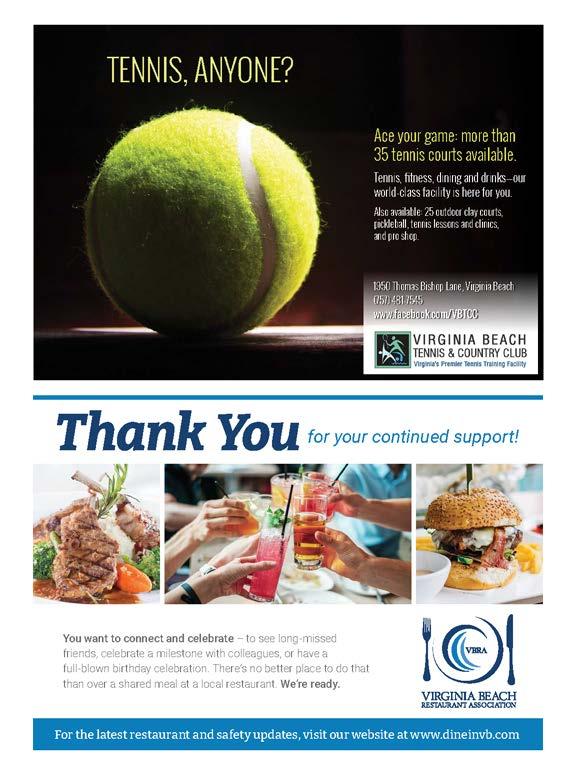
In early 2021, there was a four-day period in the City of Hampton that saw three shootings, two stabbings and two homicides. A resident emailed me and asked if Hampton was a safe city for his young family.
I responded that while the violent incidences were both alarming and disturbing, they were also an aberration.
The fact is most shootings in our cities are not random but involve individuals who are known to each other and have victims who do not cooperate with the police in helping to solve the crime. For almost 30 years, I have attempted to call attention to the violence in Hampton and the region:
•In 1991, I organized a city-wide prayer vigil in hopes that “inspired by prayer, church members may be moved to take a more active role in the fight against drug abuse and random violence through evangelism and volunteer work.” (Lisa Daniels, Daily Press, November 9, 1991)
•In a 1993 letter to the editor, I asked “where are the public outrage and protests over the murder of the 18-yearold on the basketball court in Newport News and the rape and stabbing death of a woman in her home in the East End? Or with regard to any of the other murders and maimings of African-Americans by other African-Americans in this area or across the country?” (Daily Press, April 12, 1993)
•Between 1996 and 2007, I served as a mentor to two fifth-grade boys and was a foster parent on two different occasions to three boys aged 2 1/2 to 4 1/2 years old when they came to live with us.
•At a men’s breakfast in the early 2000s, then-Hampton Circuit Court Judge Wil Taylor told those gathered, “You can go into any middle school in the City and there are those who can tell you the students who are most likely to end up in the criminal justice system. If you want to make a difference in a young person’s life,

middle school is probably your last opportunity.” Following that breakfast, I recruited 25 men from the church to serve as mentors to five boys identified by the assistant principal at a local middle school. Unfortunately, before we implemented the program, many of the men found reasons not to participate.
•In early 2018, Hampton’s former Police Chief informed the City Council that “we cannot arrest our way” out of the problem of gun violence. As a result, in May 2018, as Mayor of the City of Hampton, I invited the pastors of 46 Hampton congregations to a meeting called “Macedonian Call.” The purpose of the meeting was to partner with local churches in a “local missions” focus to combat the violence in our City. Only 12–15 pastors responded and regularly attended the monthly meetings preCovid.
•On July 29, 2019, Hampton Vice Mayor Jimmy Gray and I held the first of several “Mayor’s Gun Violence Prevention Roundtables” with youths, non-profits, and “Returning Citizens.” The topics for that first meeting were:
1.Why are our young people carrying guns?
2.What are the most important gaps in services for young people in our communities?
3. In the wake of a traumatic event (when our young people may be

experiencing trauma, feeling rage, and/or want to seek revenge), how do we design and introduce services in a way that the young person is likely to receive and take advantage of the services?
On April 12, 2021, I hosted a Facebook Live town hall that featured a discussion among Hampton Roads mayors about the level of gun violence we were experiencing in our respective cities, its causes, and how we could address it. While Hampton has hosted annual regional symposiums on youth and young adult violence prevention since 2016, the town hall marked the first time
in the egion’s history that mayors from the area’s seven largest cities met to discuss this critical topic.
On April 1, 2022, following a request by Virginia Beach Mayor Bobby Dyer and myself, the Hampton Roads Planning District Commission (HRPDC) convened a roundtable of mayors and city and county administrators to discuss the region’s continued increase in shootings and homicides. While one size will not fit all, it is hopeful this regional collaboration will result in a set of violence reduction best practices that can be compiled and implemented in each locality.
“The cycle of violence is brutal,self-reinforcing and yet another perpetuator of poverty in our most disadvantaged of poverty in our most disadvantaged
communities. When violence is commonplace, schools cannot properly educate children who are in fear; parents keep their children inside out of fear for their safety; medical professionals cannot fully address the direct and indirect consequences of violence; enrichment activities suffer; and businesses and those residents who can leave flee.” (Essay by Nick Cotter, Public Source, July 27, 2019)
In closing, I noted earlier that Hampton is a very safe city for the vast majority of residents. However, just because they are not directly affected by gun violence does not mean people should dismiss or ignore those who are the most affected. Black lives are not expendable. Yet, too many people who could help create safer,
more hopeful outcomes for young black males have chosen to sit on the sidelines. As mayors, we need to help our residents understand that, while gun violence does not affect city residents equally, it carries heavy emotional, social and economic costs that do affect all of us.
Donnie Tuck has served as a member of the City Council for 12 years, the last six as mayor. He earned his bachelor’s degree in public policy studies from Duke University and master’s degree in public administration from Old Dominion University. He has worked for the then-Washington Redskins, Howard University, Duke University, the City of Norfolk, and was most recently working as a technical writer.

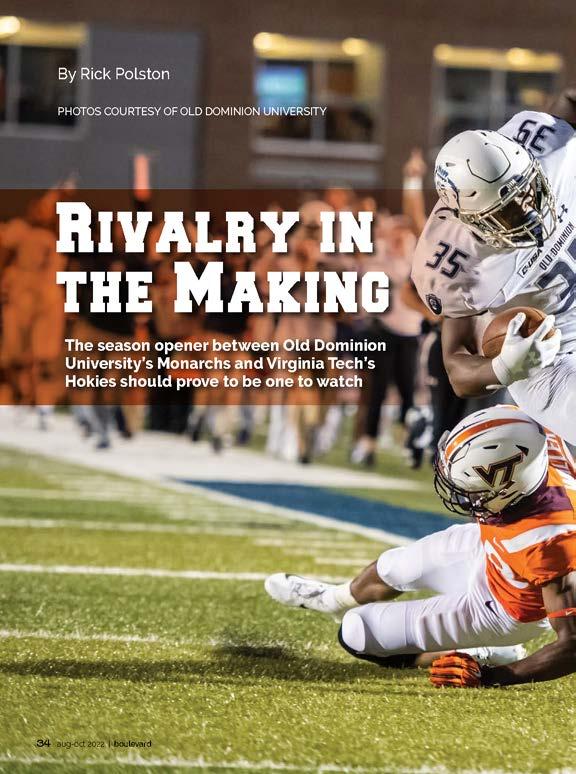
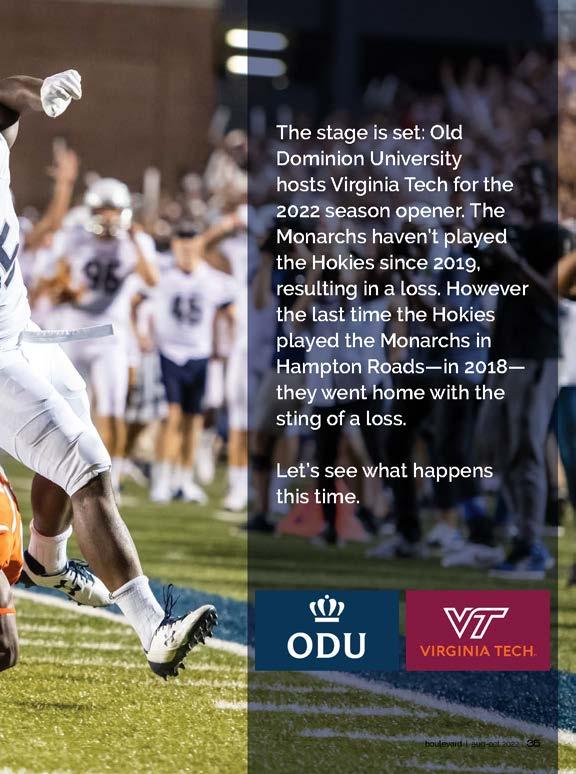

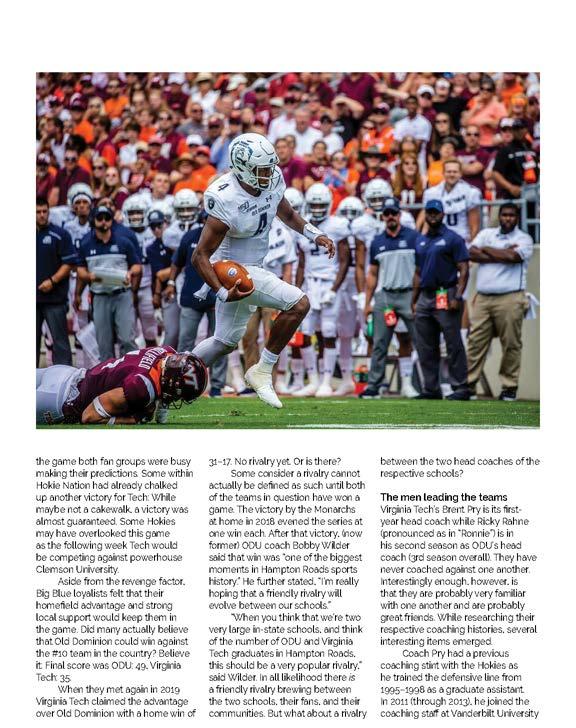
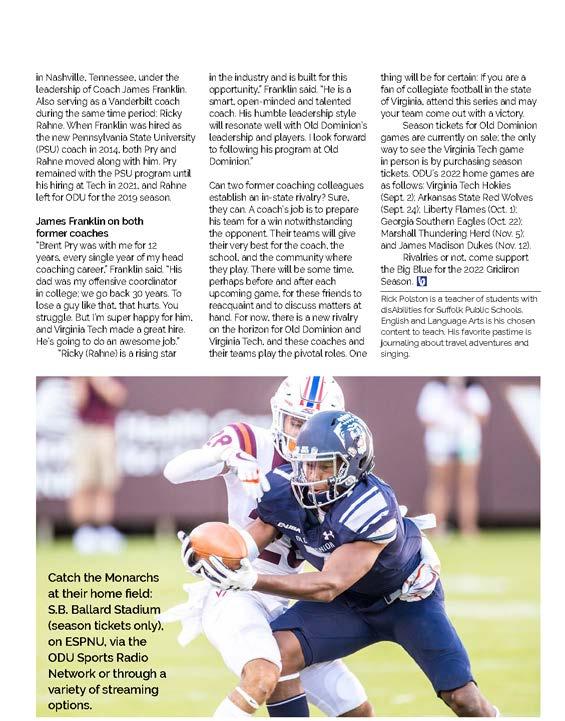


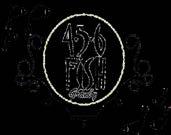
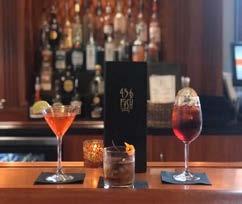
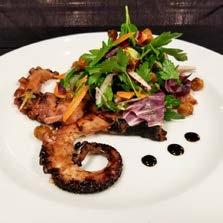
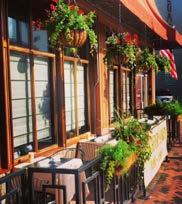
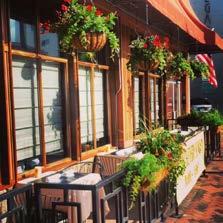
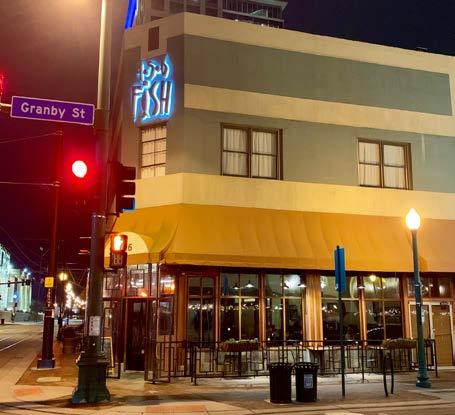



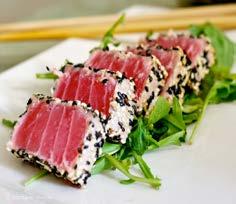
Boulevard recently sat down with Richard Parison to discuss the impact of theater and visual arts to our region in an understated but impactful way. Richard Parison is the artistic director of Hampton Arts, which includes The American Theatre and The Charles Taylor Visual Arts Center. Richard has been a professional theater director and producer for more than 25 years. He began his theatrical career as artistic associate to the Obie-Award-winning Gerald Freedman at The Great Lakes Theater Festival in Cleveland, Ohio. He later spent more than a decade in Philadelphia, Pennsylvania, as associate producing artistic director at the internationally recognized Walnut Street Theatre and then later as artistic director for the Prince Music Theater. As a director, he’s been nominated multiple times for the Philadelphia Barrymore Award for Best Director, the Richmond Critics Circle Award for the Best Director and the Sarasota Live Award for Best Production of a Play. For several years before coming to Hampton, Richard was the executive director of Richmond Center Stage, now the Dominion Arts Center. Nationally and regionally, Parison has served on several peer panels for the Theater Communications Group, National Alliance for Musical Theater, the Greater Philadelphia Cultural Alliance, and the Virginia Commission for the Arts. He holds a BFA from Miami University, Oxford, Ohio—with an emphasis in Directing and Arts Administration—and is a fellow of LEADERSHIP Philadelphia and a graduate of the PEW Charitable Trusts Emerging Arts Leadership Program.
Boulevard: I’d like to just dig in and ask a series of pre-working age questions. What is your backstory? What was the early home life like? Were you a performer as a child, musical family? Were you a late bloomer or did you or your family always know you’d be in performance arts?
Parison: I was always drawn to theatrical stories as a child and teenager. Whether it was a local traveling children’s theater that came to my elementary school, watching reruns of classic TV shows like Gilligan’s Island or Leave It to Beaver, or whether it was watching the PBS Great Performance of Sweeney Todd. Theatricality came in all types of media for me. My parents were not theatrical people and did not gravitate to the arts and culture—so I was the outlier growing up. But I knew from my pre-teens that this was something that gave me the power of self-expression—and that is a powerful thing for a child to realize.
When you were in school, what were you and your peers doing for fun? What was your first job?
I was dramatic. Prone to hyperbole and exaggeration. Looking back now, as an adult, there probably isn’t much difference! My first job was working as a stock boy at a small local beverage store in my hometown. It was not the outlet for creative expression that I dreamed up, but I loved that it provided pocket money.
Did you have a mentor that pushed you towards the performing arts as a profession?
My high school drama teacher, Myrna Rutkowski, was the first director I really saw at work in the theater. She cast me in my first high school production of “You Can’t Take It with You.” She didn’t push me, but she certainly gave me the outlet that allowed my passion to flourish. Later in college, a new
[ by david polston ]

“Acting was not to be my destiny, but my skills were going to be laid out in a different creative direction.”
professor, Janice Dean, was the first to recognize that I was going to work in professional theater as producer and director. Acting was not to be my destiny, but my skills were going to be laid out in a different creative direction.
Were you on another career path before this and if so, what was it and when did it change?
No. This was really always my journey. I was fortunate in my life to be able to make a living doing what I loved doing. Not everyone is that lucky. I recognize that.
What was your first production as a performer and then director?
As an actor it was in fourth grade, I played Sasha in our class production of “Stone Soup.” And then in college, my first production as a director was “Bearclaw” by Timothy Mason. That was the production that launched my directing career.
Post graduate? What were the circumstances that led to professional administrative theater work?
In summers between college years, I worked as a leasing agent at a large townhouse/apartment community in the area of my hometown. The owner’s wife was on the board of trustees at The Great Lakes Theater Festival in Cleveland. She facilitated an interview with Gerald Freedman, the artistic director [at the time], who was a Tony-nominated director and a leader in the national field. I went on to work with him for several years as assistant director and this was the beginning of my life and career in regional professional theater.
What were the circumstances that led you to this area? Is it a big change to what you were used to at your former position?
I was taking time off after the death of my mother. I had worked in Richmond at the Richmond CenterStage (now Dominion Arts Center) for several years. As I was home in Cleveland, settling my mother’s estate, in Richmond at the Richmond CenterStage
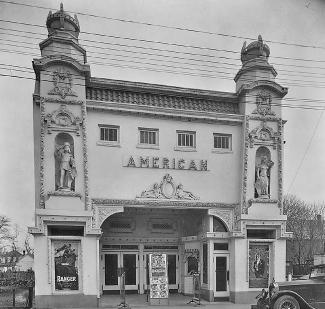
(now Dominion Arts Center) for several years. As I was home in Cleveland, settling my mother’s estate, this position came open and it felt like a tremendous opportunity to return to Virginia, which had come to feel like my second home.
What are some current struggles and pleasant achievements with the American Theatre and Visual Arts Center? Dispel some misconceptions if you know of any.
I am fortunate to lead a team of dedicated and passionate people who are committed to presenting artists on stage and in the galleries from around the world and around the corner. The American Theatre is an intimate 388seat venue. The Charles H. Taylor Visual Arts Center is a small, regional visual arts center.
Small, but mighty. When you travel, you have the opportunity to stay at a quaint, intimate bed and breakfast—or you can stay at the large corporate chain hotel. I like to think of The American Theatre
and the Visual Arts Center as two lovely bed and breakfasts in a sea of corporate chain hotels.
What could we expect happening in the future with the theater and arts in Pheobus over the next year or fiveplus years from now?
My goal as artistic director is to continue making the arts and culture (performing and visual) an integral part of the community. I want the arts and arts education to be accessible to everyone in Hampton and [throughout] the region. Additionally, representation and inclusion matters to me. I want the arts on stage and in the galleries to represent and include the wide diversity that is Hampton and our region. In my role as artistic director there is nothing more important to me—it is a privilege to serve the citizens and our vast community through professional theater, music, dance, education and visual arts.

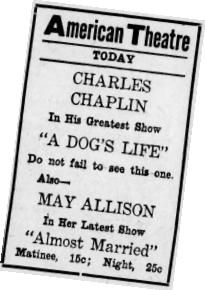
David Polston is the scenic designs, carpentry and production supervisor for CBN (The Christian Broadcasting Network). He is also an internationally published freelance photographer, blogger and writer, and the resident professional photographer for Seven Venues, LiveNation, Virginia Beach, Regent University Theater, Hampton Coliseum, The VaArts Festival and the Virginia Symphony, among others.
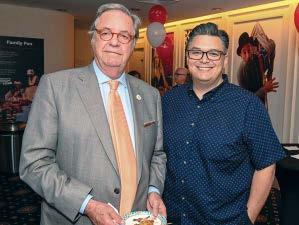
The American Theatre has evolved through the many decades in operation (as shown in the photos opposite and at the top left of this page). TOP RIGHT: An ad for a show which appeared in the July 10, 1919 edition of The Daily Press, starring Charles Chaplin. ABOVE: H. Duncan Barnett (left) and Richard Parison at the American Theatre’s 2020 season announcement event. Barnett is on the board of directors for the Hampton Arts Foundation and is the upcoming recipient of the Coastal Virginia Renaissance Award.
